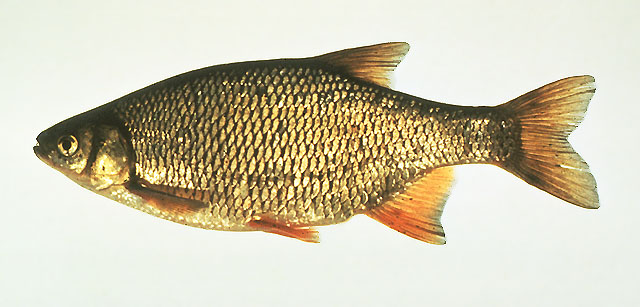| Leuciscidae (Minnows), subfamily: Leuciscinae |
| 32 cm TL (male/unsexed); max. reported age: 9 years |
|
demersal; freshwater; brackish; depth range - 10 m |
| North America: Atlantic and Gulf Slope drainages from Nova Scotia in Canada to southern Texas, USA; Great Lakes, Hudson Bay (Red River), and Mississippi River basins west to Saskatchewan in Canada, and Montana, west Oklahoma and Texas in USA. |
|
Dorsal soft rays (total): 7-9; Anal soft rays: 8-19. Body extremely compressed; lateral line strongly decurved; scaleless keel along belly from pelvic to anal fin; dorsal- fin origin behind pelvic-fin origin; mouth small, upturned on pointed snout; appears silver in clear and turbid water, and gold side and fins in coffee-colored water; fins red in southern hemisphere; dusky stripe along side, herringbone lines on upper side of young. Scales on lateral line 44-54; dorsal fin with 7-9 rays; anal fin with 8-19 rays, usually 11-14; rakers on 1st gill arch 17-19; and pharyngeal teeth 0,5-5,0 (Ref. 86798). |
| Inhabits vegetated lakes, ponds, swamps, backwaters and pools of creeks and small to medium rivers (Ref. 86798). Can tolerate low oxygen levels, high turbidity and high temperature; omnivorous but principally feed on plankton, insects and mollusks (Ref. 27549). |
|
Least Concern (LC); Date assessed: 01 March 2012 Ref. (130435)
|
| harmless |
Source and more info: www.fishbase.org. For personal, classroom, and other internal use only. Not for publication.
